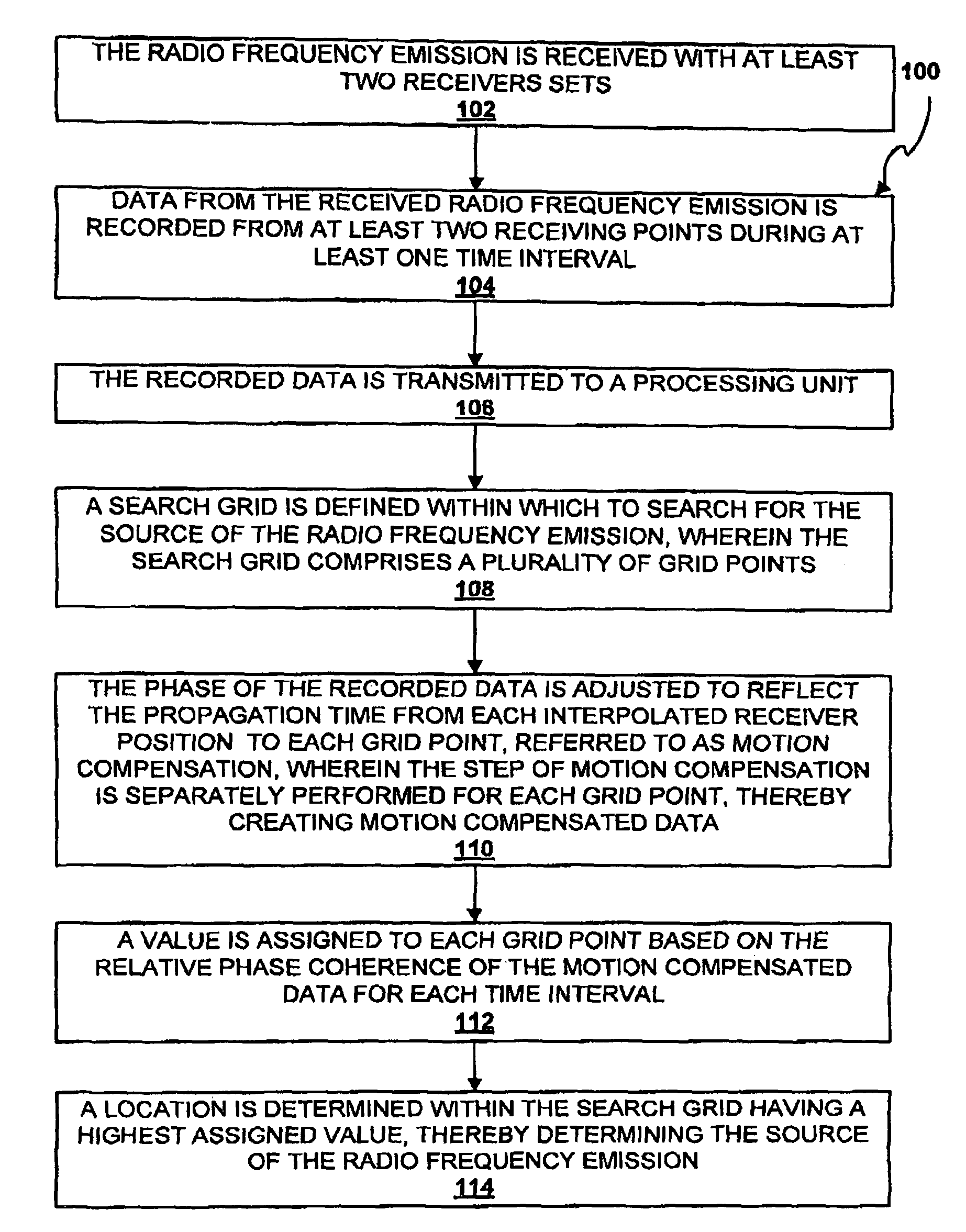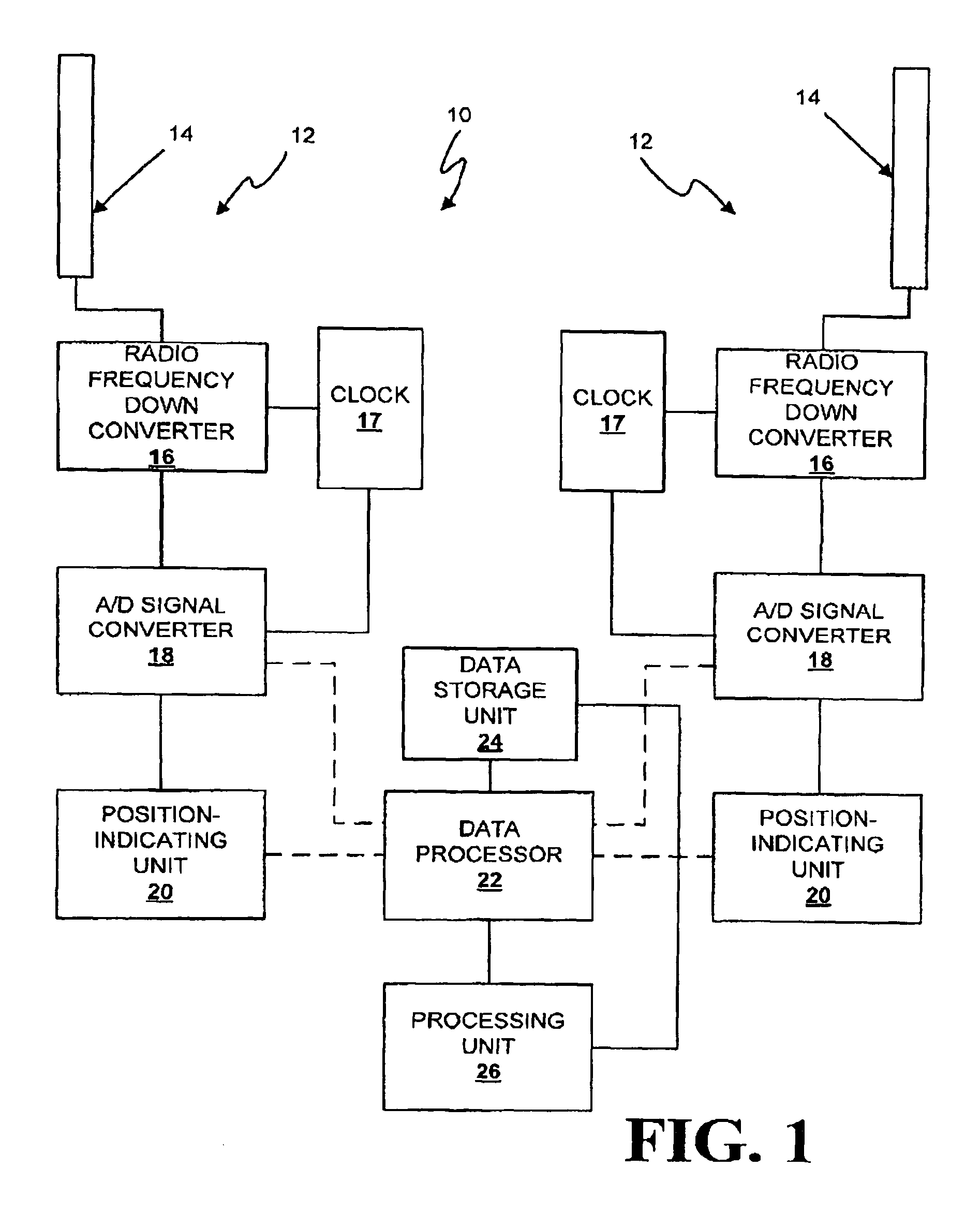Method and apparatus for locating the source of radio frequency emissions
a radio frequency emission and source technology, applied in direction finders, radio wave direction/deviation determination systems, instruments, etc., can solve the problems of multi-path interference, difficult to locate electromagnetic radio frequency emission, and inability to produce accurate direction of arrival measurements of conventional radio direction finding equipmen
- Summary
- Abstract
- Description
- Claims
- Application Information
AI Technical Summary
Benefits of technology
Problems solved by technology
Method used
Image
Examples
Embodiment Construction
[0014]FIG. 1 is a block diagram of a radio frequency emission source locator 10, in accordance with a first exemplary embodiment of the invention. At least two receiver sets 12 are provided. Each receiver set 12 includes an antenna 14 capable of receiving radio frequency emissions, a radio frequency down converter 16, an analog / digital signal converter 18, and a position-indicating unit 20. A data processor 22 is in communication with the receiver sets 12, wherein the data processor 22 combines signals from the analog / digital signal converter 18 and the position-indicating unit 20 to produce tagged data. The tagged data includes sampled, down converted radio frequency data (The data are measurements of the antenna voltages translated in frequency and converted from analog voltages to a digital representation by the radio frequency down converter 16 and the analog / digital signal converter 18), from at least one signal received by each of the antennas 14, and position-indicating unit ...
PUM
 Login to View More
Login to View More Abstract
Description
Claims
Application Information
 Login to View More
Login to View More - R&D
- Intellectual Property
- Life Sciences
- Materials
- Tech Scout
- Unparalleled Data Quality
- Higher Quality Content
- 60% Fewer Hallucinations
Browse by: Latest US Patents, China's latest patents, Technical Efficacy Thesaurus, Application Domain, Technology Topic, Popular Technical Reports.
© 2025 PatSnap. All rights reserved.Legal|Privacy policy|Modern Slavery Act Transparency Statement|Sitemap|About US| Contact US: help@patsnap.com



